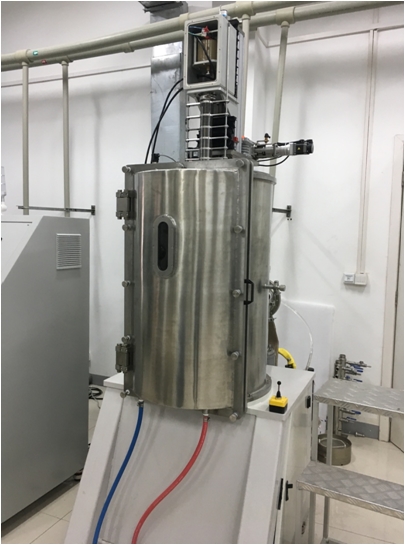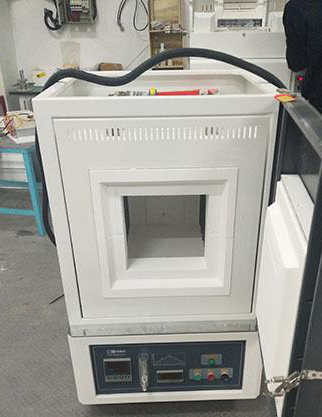 Dihedral (Shanghai) Science and Technology Co., Ltd
Dihedral (Shanghai) Science and Technology Co., Ltd
- Home
-
Products
-
- Semiconductor crystal
-
Single crystal substrate
-
Multifunctional single crystal substrate
- Barium titanate (BaTiO3)
- Strontium titanate (SrTiO3)
- Iron doped strontium titanate (Fe:SrTiO3)
- Neodymium doped strontium titanate (Nd:SrTiO3)
- Aluminium oxide (Al2O3)
- Potassium tantalum oxide (KTaO3)
- Lead magnesium niobate–lead titanate (PMN-PT)
- Magnesium oxide (MgO)
- Magnesium aluminate spinel (MgAl2O4)
- Lithium aluminate (LiAlO2)
- Lanthanu m aluminate (LaAlO3)
- Lanthanu m strontium aluminate (LaSrAlO4)
- (La,Sr)(Al,Ta)O3
- Neodymium gallate (NdGaO3)
- Terbium gallium garnet (TGG)
- Gadolinium gallium garnet (GGG)
- Sodium chloride (NaCl)
- Potassium bromide (KBr)
- Potassium chloride (KCl)
-
Multifunctional single crystal substrate
-
Functional crystal
- Optical window
- Scintillation crystal
-
Laser crystal
- Rare earth doped lithium yttrium fluoride (RE:LiYF4)
- Rare earth doped lithium lutetium fluoride (RE:LiLuF4)
- Ytterbium doped yttrium aluminium garnet (Yb:YAG)
- Neodymium doped yttrium aluminium garnet (Nd:YAG)
- Erbium doped yttrium aluminium garnet (Er:YAG)
- Holmium doped yttrium aluminium garnet (Ho:YAG)
- Nd,Yb,Er,Tm,Ho,Cr,Lu Infrared laser crystal
- N* crystal
- Metal single crystal
- Material testing analysis
- Material processing
- Scientific research equipment
-
-
Epitaxial Wafer/Films
-
Inorganic epitaxial wafer/film
- Gallium Oxide epitaxial wafer (Ga2O3)
- ε - Gallium Oxide (Ga2O3)
- Platinum/Titanium/Silicon Dioxide/Silicon epitacial wafer (Pt/Ti/SiO2/Si)
- Lithium niobate thin film epitaxial wafer
- Lithium tantalate thin film epitaxial wafer
- InGaAs epitaxial wafer
- Gallium Nitride(GaN) epitaxial wafer
- Epitaxial silicon wafer
- Yttrium Iron Garnet(YIG) epitaxial wafers
- Fullerenes&Fullerols
-
Inorganic epitaxial wafer/film
- Functional Glass
- Fine Ceramics
-
2-D material
- 2-D crystal
-
Layered transition metal compound
- Iron chloride (FeCl2)
- Niobium sulfide (NbS3)
- Gallium telluride iodide (GaTeI)
- Indium selenide (InSe)
- Copper indium phosphide sulfide (CuInP2S6)
- Tungsten sulfide selenide (WSSe)
- Iron germanium telluride (Fe3GeTe2)
- Nickel iodide (NiI2)
- Iron phosphorus sulfide (FePS3)
- Manganese phosphorus selenide (MnPSe3)
- Manganese phosphorus sulfide (MnPS3)
- Interface thermal conductive materials
-
Epitaxial Wafer/Films
-
-
High-purity element
- Non-metallic
-
Metal
- Scandium (Sc)
- Titanium (Ti)
- Indium (In)
- Gallium (Ga)
- Bismuth (Bi)
- Tin (Sn)
- Zinc (Zn)
- Cadmium (Cd)
- Antimony (Sb)
- Copper (Cu)
- Nickel (Ni)
- Molybdenum (Mo)
- Aluminium (Al)
- Rhenium (Re)
- Hafnium (Hf)
- Vanadium (V)
- Chromium (Cr)
- Iron (Fe)
- Cobalt (Co)
- Zirconium (Zr)
- Niobium (Nb)
- Tungsten (W)
- Germanium (Ge)
- Iron(Fe)
-
Compound raw materials
-
Oxide
- Tungsten Trioxide (WO3)
- Hafnium Dioxide (HfO2)
- Ytterbium Oxide (Yb2O3)
- Erbium Oxide (Er2O3)
- Lanthanu m Oxide (La2O3)
- Cerium Dioxide (CeO2)
- Tin Dioxide (SnO2)
- Niobium Oxide (Nb2O3)
- Zirconium Dioxide (ZrO2)
- Zinc Oxide (ZnO)
- Copper Oxide (CuO)
- Magnetite (Fe3O4)
- Titanium Dioxide (TiO2)
- Samarium (III) oxide (Sm2O3)
- Silicon Dioxide (SiO2)
- Aluminum Oxide (Al2O3)
- Gallium Oxide Ga2O3(Powder)
- Sulfide
- Fluoride
- Nitride
- Carbide
-
Halide
- Gallium Chloride (GaCl3)
- Indium Chloride (InCl3)
- Aluminum Chloride (AlCl3)
- Bismuth Chloride (BiCl3)
- Cadmium Chloride (CdCl2)
- Chromium Chloride (CrCl2)
- Chromium Chloride Hydrate (CrCl2(H2O)n)
- Copper Chloride (CuCl)
- Copper Chloride II (CuCl2)
- Cesium Chloride (CsCl)
- Europium Chloride (EuCl3)
- Europium Chloride Hydrate (EuCl3.xH2O)
- Magnesium Chloride (MgCl2)
- Sodium Chloride (NaCl)
- Nickel Chloride (NiCl2)
- Indium Chloride (InCl3)
- Indium Nitrate Hydrate (In(NO3).xH2O)
- Rubidium Chloride (RbCl3)
- Antimony Chloride (SbCl3)
- Samarium Chloride (SmCl3)
- Samarium Chloride Hydrate (SmCl3.xH2O)
- Scandium Chloride (ScCl3)
- Tellurium Chloride (TeCl3)
- Tantalum Chloride (TaCl5)
- Tungsten Chloride (WCl6)
- Aluminum Bromide (AlBr3)
- Barium Bromide (BaBr2)
- Cobalt Bromide (CoBr2)
- Cadmium Bromide (CdBr2)
- Gallium Bromide (GaBr3)
- Gallium Bromide Hydrate (GaBr3.xH2O)
- Nickel Bromide (NiBr2)
- Potassium Bromide (KBr)
- Lead Bromide (PbBr2)
- Zirconium Bromide (ZrBr2)
- Bismuth Bromide (BiBr4)
- Bismuth Iodide (BiI3)
- Calcium Iodide (CaI2)
- Gadolinium Iodide (GdI2)
- Cobalt Iodide (CoI2)
- Cesium Iodide (CsI)
- Europium Iodide (EuI2)
- Lithium Iodide (LiI)
- Lithium Iodide Hydrate (LiI.xH2O)
- Gallium Iodide (GaI3)
- Gadolinium Iodide (GdI3)
- Indium Iodide (InI3)
- Potassium Iodide (KI)
- Lanthanu m Iodide (LaI3)
- Lutetium Iodide (LuI3)
- Magnesium Iodide (MgI2)
- Sodium Iodide (NaI)
-
Oxide
-
High-purity element
-
-
Sputtering Target
-
Metal target material
- Gold (Au(T))
- Silver (Ag(T))
- Platinum (Pt(T))
- Palladium (Pd(T))
- Ruthenium (Ru(T))
- Iridium (Ir(T))
- Aluminium (Al(T))
- Copper (Cu(T))
- Titanium (Ti(T))
- Nickel (Ni(T))
- Chromium (Cr(T))
- Cobalt (Co(T))
- Iron (Fe(T))
- Manganese (Mn(T))
- Zinc (Zn(T))
- Vanadium (V(T))
- Tungsten (W(T))
- Hafnium (Hf(T))
- Niobium (Nb(T))
- Molybdenum (Mo(T))
- Lanthanu m (La (T))
- Cerium (Ce (T))
- Praseodymium (Pr (T))
- Neodymium (Nd (T))
- Samarium (Sm (T))
- Europium (Eu (T))
- Gadolinium (Gd (T))
- Terbium (Tb (T))
- Dysprosium (Dy (T))
- Holmium (Ho (T))
- Erbium (Er (T))
- Thulium (Tm (T))
- Ytterbium (Yb (T))
- Lutetium (Lu (T))
- Alloy target material
- Semiconductor target material
-
Oxide target material
- Aluminum Oxide (Al2O3(T))
- Silicon Dioxide (SiO2(T))
- Titanium Dioxide (TiO2(T))
- Chromium Oxide (Cr2O3(T))
- Nickel Oxide (NiO(T))
- Copper Oxide (CuO(T))
- Zinc Oxide (ZnO(T))
- Zirconium Oxide (ZrO2(T))
- Indium Tin Oxide (ITO(T))
- Indium Zinc Oxide (IZO(T))
- Aluminum Doped Zinc Oxide (AZO(T))
- Cerium Oxide (CeO2(T))
- Tungsten Trioxide (WO3(T))
- Hafnium Oxide (HfO2(T))
- Indium Gallium Zinc Oxide (IGZO(T))
- Nitride target material
- Sulfide target material
-
Antimony tellurium selenium boron target material
- Magnesium Boride (MgB2(T))
- Lanthanu m Hexaboride (LaB6(T))
- Titanium Diboride (TiB2(T))
- Zinc Selenide (ZnSe(T))
- Zinc Antimonide (Zn4Sb3(T))
- Cadmium Selenide (CdSe(T))
- Indium Telluride (In2Te3(T))
- Tin Selenide (SnSe(T))
- Germanium Antimonide (GeSb(T))
- Antimony Selenide (Sb2Se3(T))
- Antimony Telluride (Sb2Te3(T))
- Bismuth Telluride (Bi2Te3(T))
-
Metal target material
-
Sputtering Target
-
- Services
- Media
- Partner
- Contact Us
- About
- Home
- Research Assistance
- Materials Database
Materials Database
 |  |
Mini-Program 粒子猫 I 科研助手 AI, Supply and Demand in R&D | Official Account 粒子猫科研 Sci. R&D topics, New trends |
updating...
Materials Project: This database provides DFT calculation data for over 69,000 materials.
Crystallography Open Database (COD): An open-access inorganic crystal structure database that contains a large amount of crystallographic data.
AFLOWLIB.org: This library is a continuous, computational, machine-readable framework for materials data, offering numerous computed material properties.
Pauling File, inorganic materials database: This website is the world's largest inorganic structure database.
Material Data Repository: A publicly accessible database maintained by the National Institute of Standards and Technology (NIST) in the United States, used for storing and sharing materials and science-related data.
MatWeb: It is a free material property database that contains a large amount of data on metals, plastics, ceramics, and other engineering materials.
NanoHUB: Provides a wide range of computational tools, tutorials, and databases related to nanoscience and nanotechnology.
InterNano: An online information resource dedicated to providing information on nanomanufacturing.
NIST Crystal Data: A database by NIST that provides a large amount of crystal structure data.
JARVIS (Joint Automated Repository for Various Integrated Simulations): JARVIS is an open data repository maintained by the National Institute of Standards and Technology (NIST), offering a wealth of data on materials and their properties.
......
Three-Dimensional Materials
RRUFF Project: Database of Raman spectroscopy, X-ray diffraction, and chemistry of minerals
Big Data Materials in Peking university(including band structure, HSE band structure, and materials gene database)
Material (Energy band)
Computational Electronic Structure Database (CompES-X) (Energy band)
Two-Dimensional Materials
Magnetic Structures
Phonon website
Force field
symmetry
Character Tables for Point Groups used in Chemistry (Single point group)

Induction Heating Furnace
Lifting Parameters
The controller controls the lifting speed, lifting stroke and speed of the lifting mechanism
1. Lifting speed: 0.2-10mm/h
2. Lifting stroke: 0-500mm
3 speed: 0.5-40rpm
Intermediate frequency induction parameters:
1. Working voltage: 380V AC, 50 / 60Hz, three-phase
2. Output current: 42a (100a air switch is required)
3. Maximum input current: 25 kW
4. Oscillation frequency: 30 - 80 kHz
5. Cycle ratio: 80%
6. induction coil: 150mm (OD) x 140mm (ID) x90mm (H)
7. Protection: equipped with water pressure, ultra temperature and ultra power protection
Temperature control parameters:
Operating voltage; 208 ~ 240V AC, single phase
PID temperature control is adopted, and 30 temperature rise and fall procedures can be set
Over temperature & couple breaking protection is set
Temperature control accuracy: + / - 3 º C
C-type thermocouple is adopted, and the probe extends into the graphite crucible
Continuous operating temperature: 1000 º C ~ 2000 º C
Maximum heating rate: 10 º C / S (1000 º c-1200 º C) 8 º C / S (1200 º C ~ 1500 º C)
Furnace body size
The internal diameter is 400mm and the height is 700mm.
Sealing flange
Top flange: stainless steel folding flange with a 1 / 4 "armored interface (thermocouple can be inserted), which is installed with
top valve
Bottom flange: the bottom flange interface is kf25 interface, which can be connected with the vacuum pump through ripple.
Custom made
It can be customized and selected according to customer needs.

Silicon carbide rod / silicon molybdenum rod box furnace
Product Description
The silicon molybdenum rod box furnace uses high-quality silicon molybdenum rod as the heating element, and the silicon carbon rod box furnace uses high-quality silicon carbon rod as the heating element. It adopts double-layer shell structure and intelligent temperature control system, silicon controlled and phase-shifting trigger,
The furnace adopts imported 1700 alumina polycrystalline fiber material. The double-layer furnace shell is safe and reliable, energy-saving and environmental protection. The microcomputer control can quickly raise and lower the temperature, with a high degree of automation, and all indicators have reached the advanced level.
Main purpose and scope of application:
Universities, scientific research institutes and industrial and mining enterprises are used for high-temperature sintering, metal annealing, new material development, organic matter ashing and quality inspection. It is also applicable to the production and experiment of military industry, electronics, medicine and special materials.
Main functions and features:
1. The heating element adopts high-quality silicon carbide rod / silicon molybdenum rod, and the furnace adopts alumina polycrystalline fiber material, which has good thermal insulation performance, durability and high tensile strength, and greatly improves the service life;
2. Unique furnace design, durable, no collapse;
3. It can be interconnected with the computer through our software, which can realize the functions of remote control, real-time tracking, history record, output report and so on of single or multiple electric furnaces; Paperless recording device can be installed to realize data storage and output;
4. Overtemperature alarm and power off, leakage protection, safe and reliable operation;
5. Intelligent PID regulation, microcomputer control, 30 sections of programmable temperature control curve, without guard (full-automatic rise, fall and thermal insulation).
R&D support>
Zhongke Ruijing / Senior Engineer, master of engineering and doctor of Shanghai Institute of Optics and precision machinery, Chinese Academy of Sciences can jointly select experimental furnaces for your company and scientific research institutes, and senior designers can provide high-temperature furnace design schemes.
三维材料
Inorganic Crystal Structure Database (ICSD): ICSD: Home, (商业)
Springer Materials: SpringerMaterials - properties of materials, (商业)
American Mineralogist Crystal Structure Database: //rruff.geo.arizona.edu/AMS/amcsd.php
Crystalstar: //www.crystalstar.org/Index.html
RRUFF Project: Database of Raman spectroscopy, X-ray diffraction and chemistry of minerals
Materials Project: Materials Project, (含能带)
AFLOW distributed materials property repository: //www.aflowlib.org/, (含能带)
Crystallography Open Database (COD): Crystallography Open Database
Open Quantum Materials Database (OQMD): //oqmd.org/materials/composition/
Citrine Informatics: //citrination.com/search/simple?searchMatchOption=fuzzyMatch
NRELMatDB: //materials.nrel.gov/queryStd
Computional Materials Repository Projects: //cmr.fysik.dtu.dk/index.html
Big Data Materials in peking university: Big Data Materials, (含能带,HSE能带)
JARVIS-DFT: //www.ctcms.nist.gov/~knc6/JVASP.html, (含能带)
Materialsweb --- Bulk Materials: Bulk Materials
Materiae: //materiae.iphy.ac.cn/#/, (含能带,加SOC能带)
Inorganic Material Database (AtomWork): MatNavi_LOGIN
Computational Electronic Structure Database (CompES-X): //compes-x.nims.go.jp/compes-x/search, (含能带)
Superconducting Material Database (SuperCon): //supercon.nims.go.jp/supercon/index_en.jsp
NOMAD Repository: //nomad-repository.eu:8080/NomadRepository-1.1/search/index.zul
二维材料
JARVIS-DFT: //www.ctcms.nist.gov/~knc6/JVASP.html, (含能带)
Materialsweb --- 2D Materials: 2D Materials, (含能带)
Materials Cloud --- 2D structures and layered materials: Materials Cloud, (含能带)
Computational 2D materials database: //cmrdb.fysik.dtu.dk/?project=c2db, (含能带,加SOC能带,HSE能带)
磁性结构
声子谱
Phonon database at Kyoto university: //phonondb.mtl.kyoto-u.ac.jp/index.html
Phonon website: //henriquemiranda.github.io/phononwebsite/phonon.html
Phonon Dispersion Relations Database: //wolf.ifj.edu.pl/phonondb/aaalph.htm
Materials Cloud --- 2D structures and layered materials: Materials Cloud
JARVIS-DFT: JARVIS-DFT
力场
NIST --- Interatomic Potentials Repository: Interatomic Potentials Repository
OpenKIM: //openkim.org/intro-models/
JARVIS for Force-fields: JARVIS-FF
ReaxFF force fields: Included Forcefields
LAMMPS/potentials: lammps/lammps
EAM potentials: //sites.google.com/site/eampotentials/
对称性
Character Tables for Point Groups used in Chemistry: //gernot-katzers-spice-pages.com/character_tables/index.html, (Single point group)
Koster et. al., Properties of the Thirty-two Point Groups, MIT Press (1963): //www.phyast.pitt.edu/~snoke/resources/pointgroupshtml4thEd/PointGroupsFrame.html, (Double point group)
Bilbao Crystallographic Server: Bilbao Crystallographic Server

